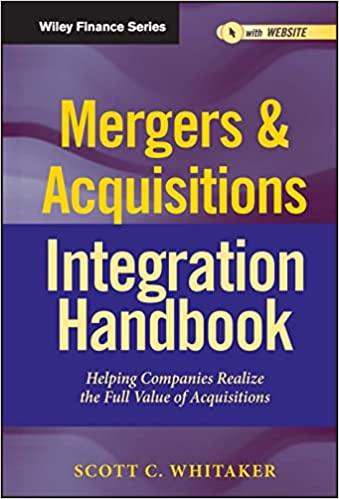Answered step by step
Verified Expert Solution
Question
1 Approved Answer
Task 2 Capital Structure and Weighted Average Cost of Capital: In this task, we are examining the current capital structure of BEB and determine the
Task
Capital Structure and Weighted Average Cost of Capital:
In this task, we are examining the current capital structure of BEB and determine the WACC of the company. Assume that BEBs tax rate is
To compute the WACC you must first find the aftertax cost of debt, the cost of equity, and the proportions of debt and equity in the firm. You can assume that the cost of debt before tax is for the firm. Please clearly show how you derive each of these values:
The aftertax cost of debt
Cost of equity from your previous task
Proportions of debt and equity in the firm from the balance sheet
How do we compute the WACC in this circumstance? Why do we need to be concerned with the WACC?
Any insights into the capital structure of BEB
Concept Check: Capital structure for a public company consists of both debt and equity. We must take into account the ability to write off interest payments in the calculation of our cost of debt which results in an aftertax cost of debt being used in our WACC calculation.
The weighted average cost of capital is the weighted average of the cost of equity and the aftertax cost of debt. Another way of looking at this is by computing the effect of the capital structure on expected returns by investors.
WACCSBS x RsBBS x RB x tc
Where
S value of equity
B value of debt
Rs cost of equity
After tax cost of debt: RB x tc
Helpful Hint: One thing to bring up here is WACC is needed to determine risk on several levels. To determine risk we need to remember the following items:
Risk is a deviation from expectations.
We need to set expectations for our investments based on risk and return. Higher risk higher return.
Capital is obtained from the marketplace in two forms; equity and debt. This is the capital structure of a corporation and impacts the profits of a company depending on how this is managed.
We use our cost of capital to discount any cash flows from new investments NPV and IRR analysis
If the cost of capital rises then our risk rises and the projects we undertake to increase sales and return to our investors are reduced.
If debt rises then our obligation to make payments on interest increases and profits can decrease if sales do not increase rapidly enough.
If risk increases our beta will increase to show the increase in risk. This will increase our required rate of return to stockholders CAPM and thus increase our required rate of return we must use in discounting future cash flows.
Step by Step Solution
There are 3 Steps involved in it
Step: 1

Get Instant Access to Expert-Tailored Solutions
See step-by-step solutions with expert insights and AI powered tools for academic success
Step: 2

Step: 3

Ace Your Homework with AI
Get the answers you need in no time with our AI-driven, step-by-step assistance
Get Started


